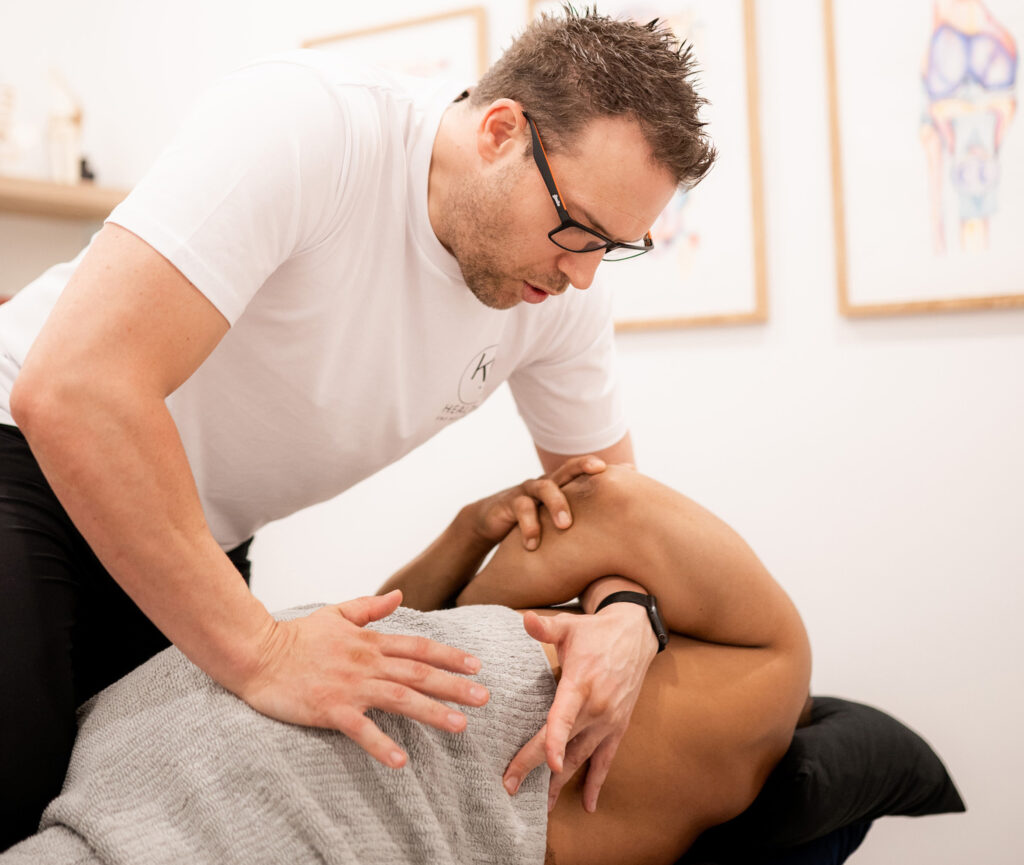A metacarpal fracture is a break in one of the five long bones in the hand, located between the wrist and the fingers. These bones help form the knuckles and give structure to the palm. A fracture can occur in the shaft, base, or head of the metacarpal, and may affect hand strength, movement, and alignment depending on the severity.
An analogy…
Think of the metacarpals like the wooden frame of a tent, if one of the beams snaps or bends, the whole structure becomes unstable. That’s how a broken metacarpal can affect the way the entire hand functions.
What are other names that a metacarpal fracture can be called?
Fractured Metacarpal
What causes a metacarpal fracture?
Metacarpal fractures typically occur when a strong direct force is applied to the hand, such as punching something hard, falling onto an outstretched hand, or getting the hand caught in machinery. The force exceeds the bone’s capacity to absorb it, causing a break. Sometimes the bone shifts out of place, which is called a displaced fracture, and can affect nearby joints, tendons, or ligaments.
What are the signs and symptoms of a metacarpal fracture
- Pain and swelling in the hand, especially over the injured area
- Bruising or visible deformity of the hand
- Difficulty making a fist or moving the fingers normally
- Sunken or misaligned knuckles, especially in displaced fractures
- Pain or weakness when gripping or holding objects
- What tests are used to diagnose a metacarpal fracture?
What tests are used to diagnose a metacarpal fracture?
A practitioner will usually begin with a physical exam, checking for tenderness, swelling, deformity, and finger alignment. X-rays are the most common way to confirm the fracture, determine how displaced it is, and check if any joints are involved.
How long does a metacarpal fracture take to heal?
Simple, non-displaced fractures usually heal with splinting or casting in 3 to 6 weeks, followed by hand therapy to restore motion and strength. Displaced or unstable fractures that require surgery may take 6 to 10 weeks or longer, with structured rehabilitation needed afterward to ensure full return of hand function.
How does a metacarpal fracture happen?
- Punching a hard surface
- Falls onto an outstretched hand or directly onto the hand
- Sports injuries, especially in contact or high-impact sports
- Workplace trauma from tools, machinery, or repetitive strain
- Crush injuries from heavy objects or accidents
- Poor grip technique in sports or manual tasks
- Improper use of hand tools increasing stress on the metacarpals
What treatment can help a metacarpal fracture?
- Immobilisation of the hand in a splint or cast for 3–4 weeks
- Followed by gentle exercises to restore mobility and grip strength
- Use of ice, elevation, and anti-inflammatory medication to manage swelling and pain
What exercises or stretches can I do for a metacarpal fracture?
- Gentle finger and wrist mobility exercises
- Tendon gliding drills
- Grip strengthening using therapy putty or hand grippers
- Fine motor control exercises
What products can help with a metacarpal fracture?







